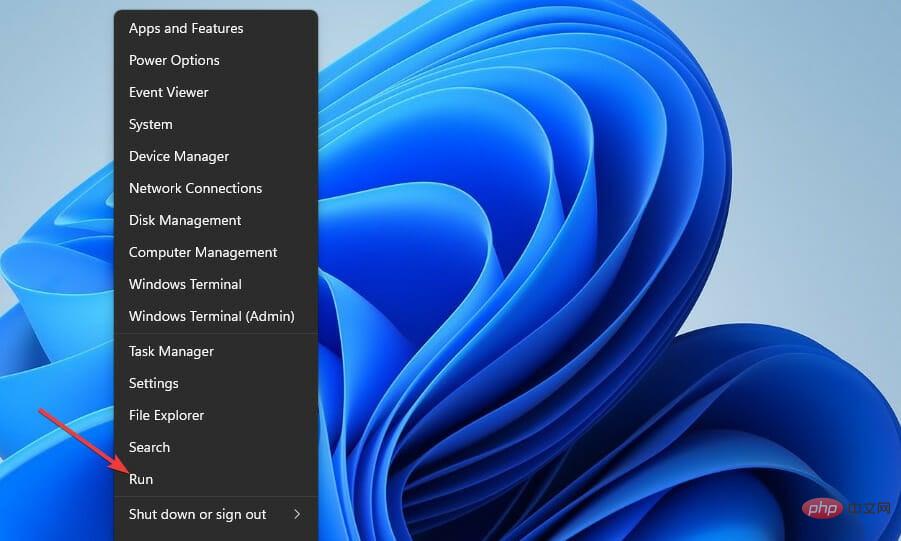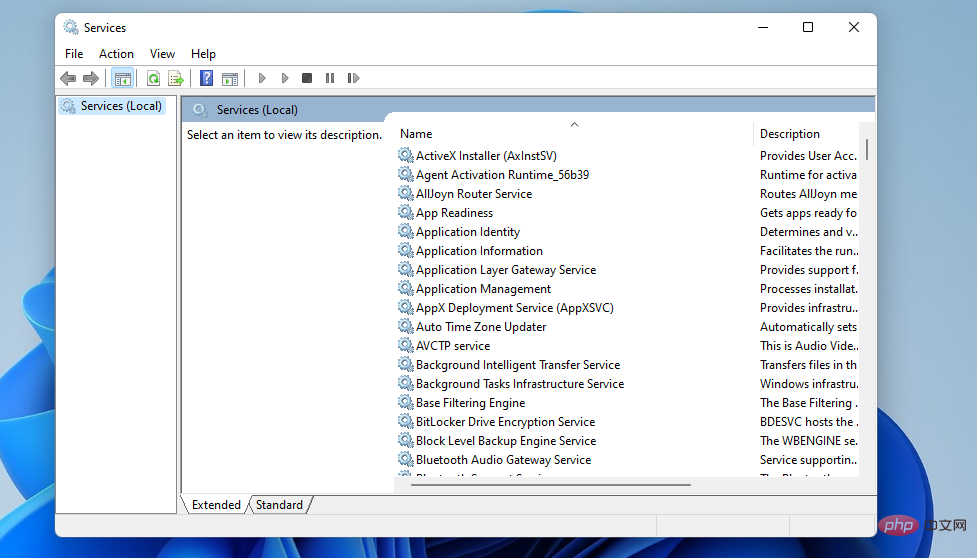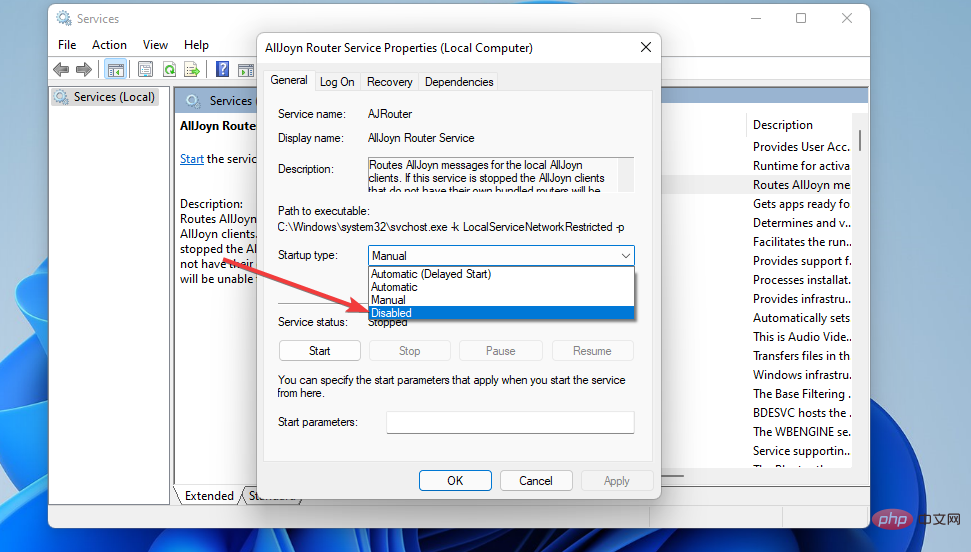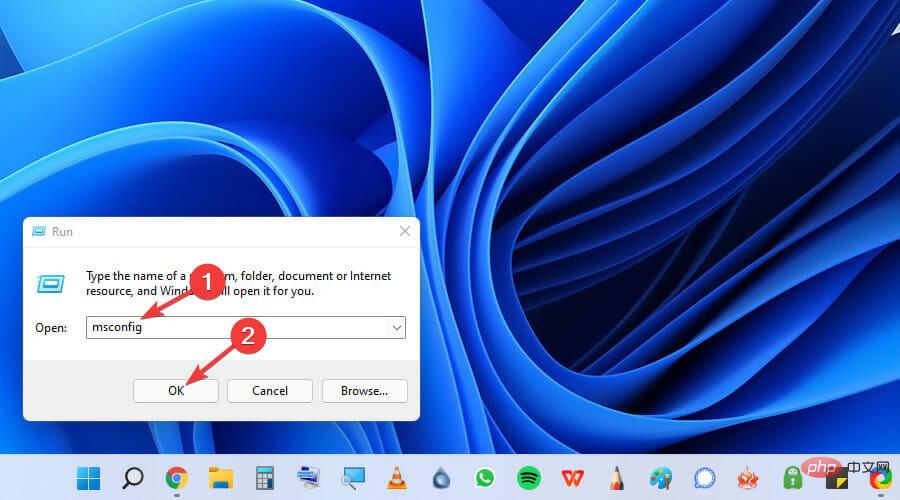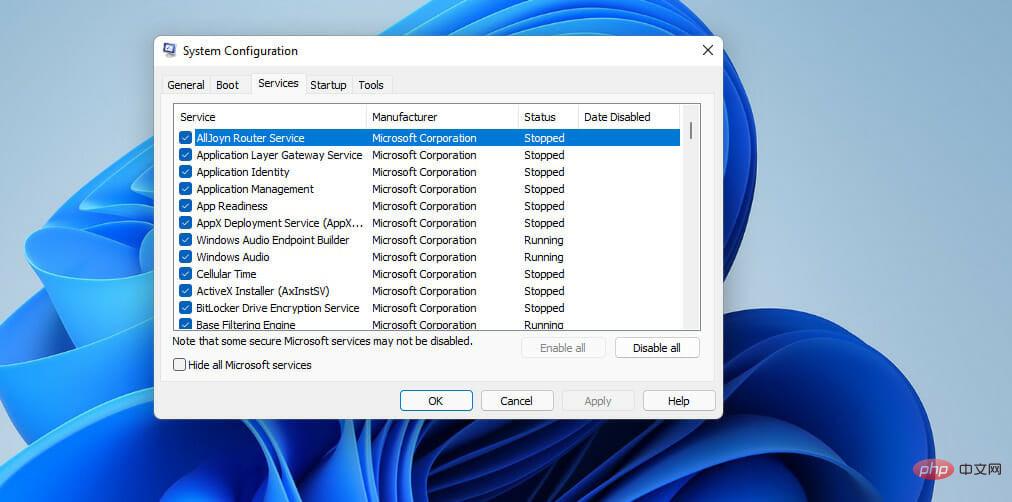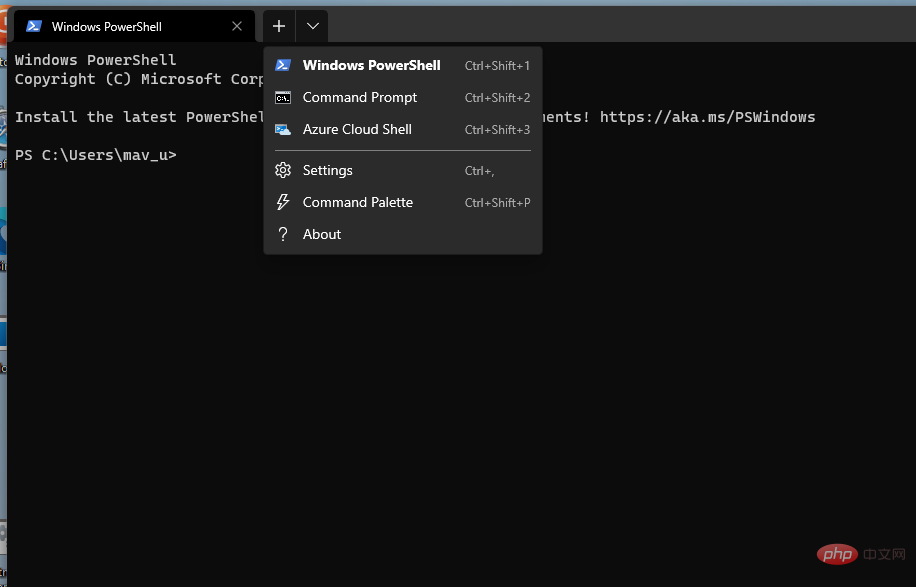Windows 11 services to disable: How to do it safely
Windows 11 has a variety of services, most of which you probably didn't know existed. Services are small programs designed to manage very specific functionality. Unlike more conventional software, they run in the background and don't require any kind of user input to operate.
Some services are more important than others. Most third-party software services can be disabled very safely because they only affect the software they are targeted against. However, there are some Windows services you shouldn't touch. You can use the following methods to disable services in Windows 11.
Why should you disable services in Windows 11?
Services consume system resources, such as RAM (Random Access Memory), in much the same way as regular desktop software. Most services consume very little system resources. However, many services combined can stack up and waste a lot of RAM.
Therefore, disabling a large number of redundant services can free up system resources for the desktop software you need to use. You might have a lot of active services on your PC that you don't need. You can view running services and their RAM usage on the Processes tab of Task Manager.
What Windows 11 services should I disable?
There may be many services that enable Windows 11 features that you never use. The safest services to disable are those that few users need for some of the most obscure features. These are some of the most secure features you can disable in Windows 11:
- Phone Service: This service is primarily used by the Your Phone app.
- Windows Insider Service: Only users of the Windows Insider program need to enable this service.
- BluetoothSupport Service: This is a required service for all users who pair a Bluetooth device with their PC. However, if you don't do this, you can safely disable this feature.
- Fax: A somewhat outdated Fax service that most users don't need.
- Remote DesktopService: If you do not need to connect to another computer remotely, please disable this service.
- Remote Desktop Configuration: This is another Remote Desktop connection service that you can safely disable.
- Windows Mobile Hotspot Service: Windows Mobile Hotspot Service is a required service for mobile hotspots, but most users may not need to enable it.
- Windows Error Reporting Service: Simply enable this service to send error reports.
- Remote Registry: Do you need to edit your PC's registry from a remote computer? If not, go ahead and disable this service.
- Retail Demo Service: This service is required for Windows Retail Demo mode and is not required by almost all home users.
- Wallet Service: If you don't use a wallet app, you don't need this Service.
In addition to this, you can safely disable third-party software services. Check the instructions for such services to determine whether you need to enable them. Alternatively, you can uninstall uncommon third-party software to remove its services.
Disabling services will ensure that they never start automatically. You can always re-enable disabled services if you need to use required Windows features. Just make sure to double-check the service's instructions before disabling anything.
How to stop unnecessary services in Windows 11?
1. Using the "Services" window
- right-click the "Start" menu button and select "Run" in the menu displayed directly below.

- To open the Services window, type services.msc and then press Enter.

- Double-click an enabled service listed in this window to open its properties window.

- Read the service description in the properties window to help you determine whether you need the service.
- Press the Stop button of the service.
- Then click the Disable Startup option on the type drop-down menu.

- Press the "Apply" button to disable the service.
- Click "OK" to close the properties window.
Note that you need administrator rights to disable and enable services.
2. Use MSConfig
- Press the Win X key, and then select Run .
- Type msconfig and click OK.

- Select the "Service" tab in the "System Configuration" window displayed directly below.

- Uncheck the checkboxes for the services listed here.
- Click Apply to save the new options.
- Then press OK to exit the window.
- After this, you will be prompted to restart Windows. Click "Restart" in the dialog box to apply the changes.
Note that you can select the "Hide all Microsoft services" option to exclude these services. Then choose to disable the remaining third-party software services listed. Clicking Disable All is a quick way to deactivate all non-essential services.
3. Disable the service through Windows Terminal
- Press the magnifying glass taskbar button to open the search box.
- Type Windows Terminal in the search box, right-click it and select Run as administrator.

- Then click to open a new tab and select Command Prompt here.

- Enter the following command in the command prompt tab:
<strong>sc stop "service name" && sc config "service name" start=disabled</strong>
- Then press the key to run the command. Return
NOTE
You need to replace the service name in this command with the exact name of the service you want to disable.
If services are running without any real usage, modifying their state will definitely make Windows 11 run faster, even though you shouldn't expect a big difference.
Another helpful tip is that you can also disable widgets from the new operating system to contribute more to the processing speed.
Expert Tip:
Some PC problems are difficult to solve, especially when they involve corrupted repositories or missing Windows files. If you are having trouble fixing errors, your system may be partially corrupted.
We recommend installing Restoro, a tool that will scan your machine and determine what the fault is.
Click here to download and start repairing.
Although not recommended, you can also choose to disable automatic updates in order to increase the speed of your system, but it is worth noting that missing some important updates may put your system at risk.
Other optimizations include removing Teams from the system, which also puts a strain on startup times, and disabling the Snap Layout feature, which also slightly improves performance.
There are Windows and third-party software services. Windows exists to ensure the platform runs smoothly. These services are required for updating Windows, printing, file sharing, scanning, and more.
Third-party services specialize in software packages installed on your PC. For example, the Google Updater Service is a service that automatically updates Chrome. After disabling the service, you will need to update your browser manually.
You can disable redundant services using any of the above methods. By doing this, you can improve PC performance by freeing up resources for software you use frequently. Therefore, don't let unnecessary services waste system resources.
Using the service applications built into the system is one of the most user-friendly ways to achieve these results. A close second is the method using MSConfig, while the most complex method is to use the Windows Terminal and write specific commands.
If you are not sure which services you need to turn off or what they do, by far the safest method is the first method, as the Services app is designed to show you information about the services you are about to turn off. , to help you make an informed decision.
You can also simply use the list we mentioned in this guide and find a specific service on the list. This approach will also ensure that you can always return to the service you need and activate it if needed in the future.
The above is the detailed content of Windows 11 services to disable: How to do it safely. For more information, please follow other related articles on the PHP Chinese website!

Hot AI Tools

Undresser.AI Undress
AI-powered app for creating realistic nude photos

AI Clothes Remover
Online AI tool for removing clothes from photos.

Undress AI Tool
Undress images for free

Clothoff.io
AI clothes remover

AI Hentai Generator
Generate AI Hentai for free.

Hot Article

Hot Tools

Notepad++7.3.1
Easy-to-use and free code editor

SublimeText3 Chinese version
Chinese version, very easy to use

Zend Studio 13.0.1
Powerful PHP integrated development environment

Dreamweaver CS6
Visual web development tools

SublimeText3 Mac version
God-level code editing software (SublimeText3)

Hot Topics
 1385
1385
 52
52
 How to run a JAR file on Windows 11 or 10
May 12, 2023 pm 06:34 PM
How to run a JAR file on Windows 11 or 10
May 12, 2023 pm 06:34 PM
Windows 11 is capable of running a large number of file types with or without external third-party applications. Not only does it allow you to perform numerous tasks from the comfort of your PC, but it also ensures that you can take advantage of your PC's raw capabilities. Today, we'll take a look at a complex file type—jar—and tell you how to open it on your Windows 11 or Windows 10 PC. What is a jar file? jar is an archive package format that may or may not contain an executable Java program. These archives can contain Java applications or source code, which can then be used to compile and run applications without having to write separate code for each application. You can use various methods
 How to disable driver signature enforcement in Windows 11
May 20, 2023 pm 02:17 PM
How to disable driver signature enforcement in Windows 11
May 20, 2023 pm 02:17 PM
Microsoft has built several security features into Windows to ensure your PC remains secure. One of them is driver signature enforcement in Windows 11. When this feature is enabled, it ensures that only drivers digitally signed by Microsoft can be installed on the system. This helps most of the users to a great extent as it protects them. But there is a downside to enabling driver signature enforcement. Suppose you find a driver that works for your device, but it is not signed by Microsoft, although it is completely safe. But you won't be able to install it. Therefore, you must know how to disable driver signing in Windows 11
 4 Ways to Enable or Disable Microsoft Store on Windows 11 or 10
May 14, 2023 am 10:46 AM
4 Ways to Enable or Disable Microsoft Store on Windows 11 or 10
May 14, 2023 am 10:46 AM
Here are some possible reasons why you need to disable Microsoft Store: Stop unwanted notifications. Preserves data by limiting the background processes of the Microsoft Store to improve security or privacy Addresses some issues related to the Store or the apps it installs. Restrict children, family members, or other users from downloading applications without permission. Steps to Disable or Enable Windows Store Before following this tutorial, disabling the Microsoft Store will also stop the installation of any apps that require its services. To use the store, users need to enable its service in the same way as blocking it. 1. Block WindowsStore background service Let us from restricting Microsoft Store as
 How to fix Windows 11 activation error 0xc004c060
May 17, 2023 pm 08:47 PM
How to fix Windows 11 activation error 0xc004c060
May 17, 2023 pm 08:47 PM
Why am I encountering Windows 11 activation error 0xc004c060? First make sure you are using genuine Windows and that the license key is valid. Also, check if it was obtained from an official source and if the key is suitable for the installed OS version. If there is an issue with any of these, you may encounter Windows 11 activation error 0xc004c060. So be sure to verify these and if you find everything is in order, move on to the next section. If you obtained the key through unreliable means or believe that the installed copy is a pirated version, you will need to purchase a valid key from Microsoft. In addition to this, misconfigured settings, missing
 0x80010105: How to fix this Windows update error
May 17, 2023 pm 05:44 PM
0x80010105: How to fix this Windows update error
May 17, 2023 pm 05:44 PM
Microsoft regularly releases Windows updates to improve functionality or increase the security of the operating system. You can ignore some of these updates, but it's important to always install security updates. While installing these updates, you may encounter error code; 0x80010105. An unstable connection usually causes most update errors, and once the connection is reestablished you're good to go. However, some require more technical troubleshooting, such as the 0x80010105 error, which is what we will see in this article. What causes WindowsUpdate error 0x80010105? This error may occur if your computer has not been updated in a while. Some users may have permanently disabled W for their reasons
 How to fix runtime error 339 on Windows 11/10
May 13, 2023 pm 11:22 PM
How to fix runtime error 339 on Windows 11/10
May 13, 2023 pm 11:22 PM
There can be several reasons why runtime error 339 occurs when running a program. Some of them may be that some ocx or dll files are missing, damaged or the dll or ocx is not registered. This would be an annoying experience for the smooth execution of the application. Here are some of the possible error messages you may see for Runtime Error 339 Error – Runtime Error 339: Component DUZOCX32.OCX is not registered correctly or the file is missing. Error – Runtime Error 339. Component MSMASK32.ocx or one of its dependencies is not registered correctly; the file is missing or invalid. Error – Runtime Error '339': Component 'FM20.DLL' or one of its dependencies was not correctly noted
 How to disable display scaling for high DPI settings in Windows 11 or 10
May 22, 2023 pm 10:11 PM
How to disable display scaling for high DPI settings in Windows 11 or 10
May 22, 2023 pm 10:11 PM
The default display scaling feature on Windows 10 or later is a core component of the Windows operating system. But sometimes, this feature of certain apps can cause compatibility issues, unreadable text, blurry logos, and ultimately, app crashes. This can be a huge headache if you're dealing with 2160p or higher resolutions. There are many ways to disable the default display scaling feature on high DPI settings. We've selected the best ones and detailed step-by-step instructions for each process. How to Disable Display Scaling on High DPI Settings There is a way, all you have to do is disable high DPI scaling for a single application, and there is a way to do it for the entire Window
 How to disable core parking on Windows 10
May 16, 2023 pm 01:07 PM
How to disable core parking on Windows 10
May 16, 2023 pm 01:07 PM
If you are a Windows user and want to disable the core parking functionality in your system, this article will guide you through the process. What is core parking? The core parking function is a power saving mechanism. It puts some of your processors into a sleep mode that doesn't perform any tasks and consumes very little or no power. This helps reduce energy consumption and therefore heat in the system. These cores are unparked when needed. Few users need to disable this feature, especially gamers. Disabling this feature will improve your system performance. Disable Windows Core Parking using Windows Registry Editor Step 1: Use Windows + R keys simultaneously to open the run prompt. Step 2: At the run prompt



